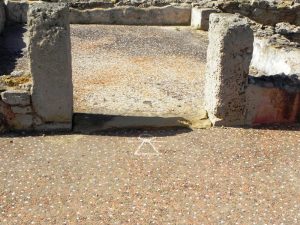الناس / الثقافة
Ancient Kerkuane housed about approximately 2,000 people. Many homes were single-storey with steps leading to a rooftop terrace. On the floor of several houses, you could see an early form of mosaic known as opus signinum, in which fragments of white stone were inserted amongst the red paving.

Hydria Virtual Museum
It was a rich and well operated settlement with most of its resources deriving from hinterland. The economic and social development of the city is linked to the diversity of the activities of its population.
- First trade, on a local scale, but also with other Punic settlements around the Mediterranean coast. Phoenicians were well known tradesmen and navigators.
- Then agriculture, benefiting the rich and fertile soils of the hinterland of the region and the abundant groundwater.
- The handcrafts (pottery, metal, jewelry, masonry, and textile dyeing), as testified by the scattered workshops found today in the remains of the city. These crafts reflect the high level lifestyle of people in the Punic Kerkuane.
All in all, Phoenicians of Kerkouane appeared to be an industrious, commercially minded people, with only a few grand public buildings, concentrating their wealth and their efforts on their own very substantial houses.

